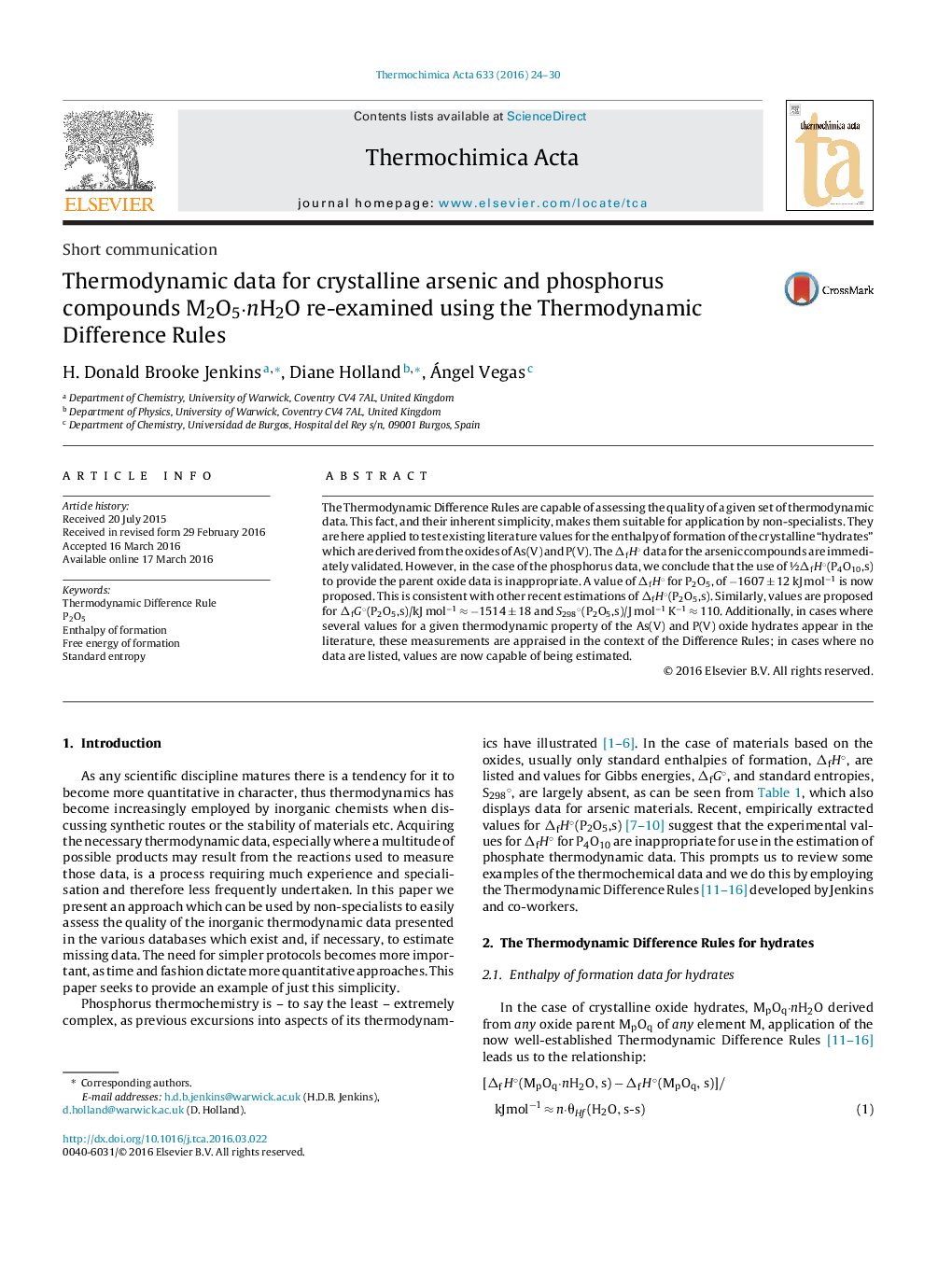| Article ID | Journal | Published Year | Pages | File Type |
|---|---|---|---|---|
| 672737 | Thermochimica Acta | 2016 | 7 Pages |
•Simple procedure for assessing quality of inorganic thermodynamic data.•Simple procedure for estimating missing data.•The use of ½ΔfH°(P4O10,s) to provide parent oxide data for enthalpy of formation of phosphate hydrates is inappropriate.•A value for ΔfH°(P2O5,s) of −1607 kJ mol−1 is proposed.•Similarly, values are proposed for ΔfG°(P2O5,s)/kJ mol−1 ≈ −1514 ± 18 and S298°(P2O5,s)/J mol−1 K−1 ≈ 110.
The Thermodynamic Difference Rules are capable of assessing the quality of a given set of thermodynamic data. This fact, and their inherent simplicity, makes them suitable for application by non-specialists. They are here applied to test existing literature values for the enthalpy of formation of the crystalline “hydrates” which are derived from the oxides of As(V) and P(V). The ΔfH° data for the arsenic compounds are immediately validated. However, in the case of the phosphorus data, we conclude that the use of ½ΔfH°(P4O10,s) to provide the parent oxide data is inappropriate. A value of ΔfH° for P2O5, of −1607 ± 12 kJ mol−1 is now proposed. This is consistent with other recent estimations of ΔfH°(P2O5,s). Similarly, values are proposed for ΔfG°(P2O5,s)/kJ mol−1 ≈ −1514 ± 18 and S298°(P2O5,s)/J mol−1 K−1 ≈ 110. Additionally, in cases where several values for a given thermodynamic property of the As(V) and P(V) oxide hydrates appear in the literature, these measurements are appraised in the context of the Difference Rules; in cases where no data are listed, values are now capable of being estimated.
Graphical abstractFigure optionsDownload full-size imageDownload as PowerPoint slide
